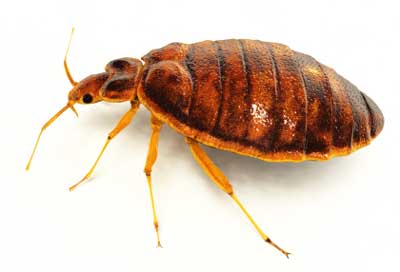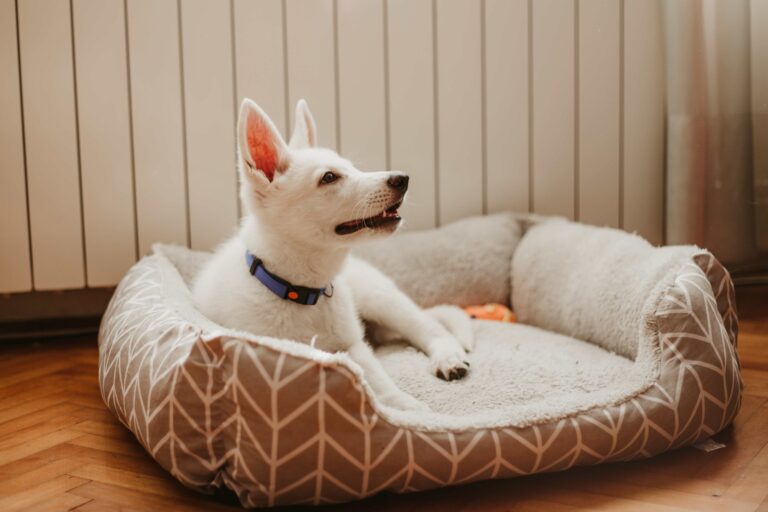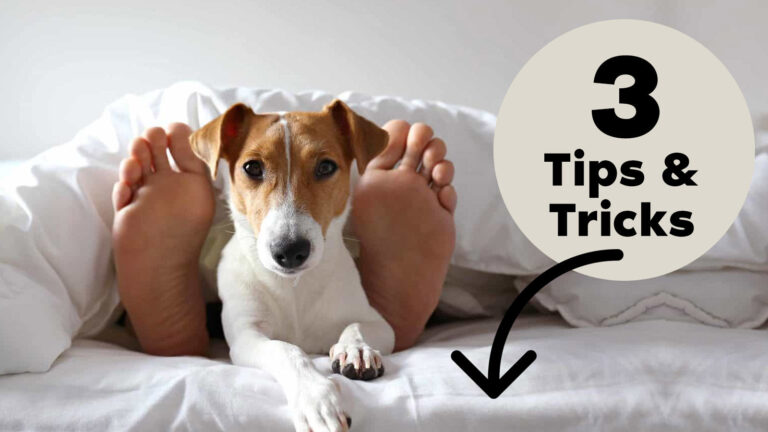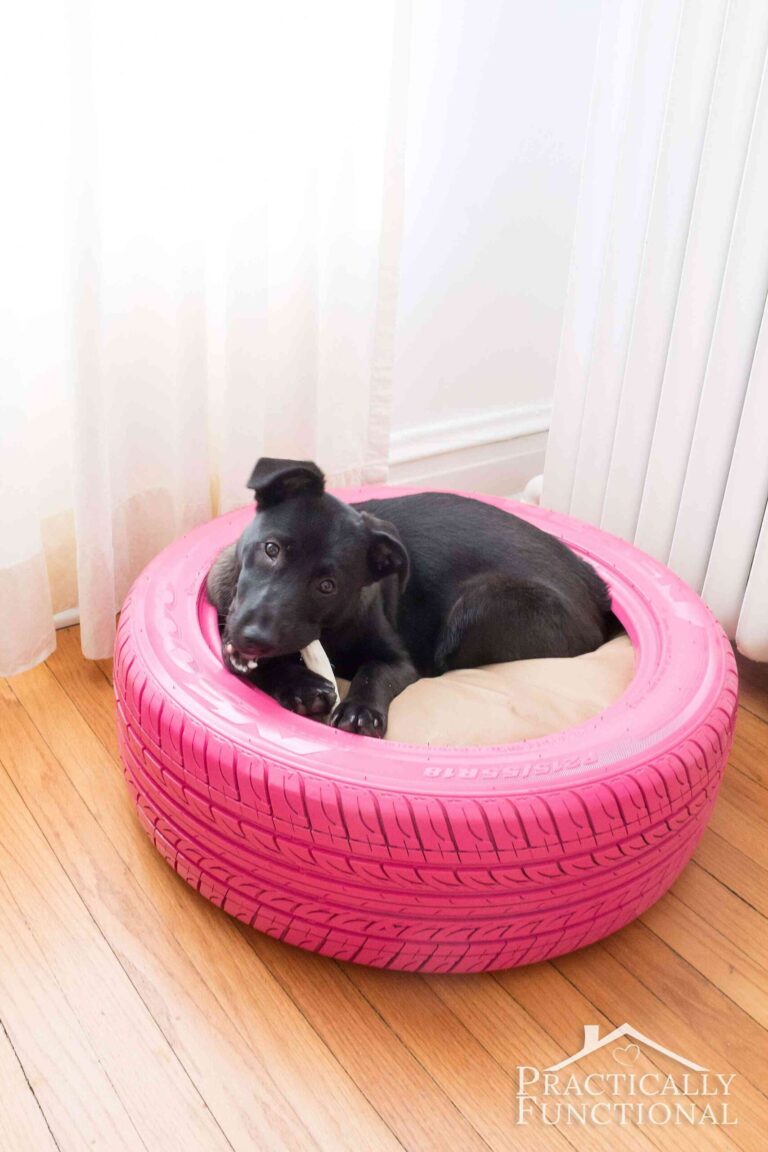How Do You Know If Your Dog Has Bed Bugs? Protect Your Pet
Last Updated on May 14, 2024 by Petpalace54
To know if your dog has bed bugs, look for any unusual bites or marks on their skin, excessive itching, and dark specks around their bedding. Although bed bugs usually prefer human hosts, dogs can still carry them & transmit them to their owners.
How Do You Know If Your Dog Has Bed Bugs? Bed bugs are pesky insects that can cause a lot of trouble, not just to humans but to pets as well. While most people associate bed bugs with humans, dogs can also get bitten by these bloodsucking pests. Unlike fleas and ticks, bed bugs don’t usually infest dogs’ fur.
Instead, they feed and then retreat to their hiding spots. However, bed bugs can still hitch a ride on your dog and find their way to your bed or couch. We will discuss how to identify if your dog has bed bugs and how to get rid of them to keep your family & furry friends safe.
Table of Contents
How Do You Know If Your Dog Has Bed Bugs? Symptoms Of Bed Bugs
Although bed bugs usually don’t infest dogs, the insects can still bite and feed on them before going back to their hiding places. You can check for bed bug feces and shed exoskeletons around your pet’s bedding as secondary signs that they have bed bugs. Using a flea comb or seeking medical treatment may also be necessary if your dog experiences a high number of bites or reactions.
Symptoms of Bed Bugs in Dogs
Bed bugs are small, wingless insects that feed on the blood of humans and animals, including dogs. Although bed bugs don’t usually infest dogs, they can still bite them, causing a range of symptoms. Here are some of the most common symptoms of bed bugs in dogs:
Excessive Scratching & Licking
One of the first signs that your dog may be dealing with bed bugs is excessive scratching and licking. Bed bug bites can cause intense itching & discomfort, which can lead your dog to scratch and lick the affected areas incessantly. This can result in redness, swelling, and even secondary infections from broken skin.
Presence Of Red Spots Or Bites
Bed bug bites are small, red, and often appear in clusters or lines on the skin. These bites can be difficult to see on your dog’s fur but may become more apparent in areas with thinner hair, such as the belly, ears, and groin. Keep an eye out for any red spots or bites on your dog’s skin, as these could be a sign of bed bug infestation.
Behavioral Changes
Bed bug bites can cause a range of behavioral changes in dogs. Some dogs may become more irritable or restless, while others may become more lethargic or withdrawn. If you notice any changes in your dog’s behavior, it’s important to investigate the cause & address any potential bed bug infestations.
In conclusion, bed bugs in dogs can be a serious problem, causing discomfort, itching, & potential health complications. If you suspect that your dog is dealing with bed bugs, it’s important to take action to address the issue and prevent further infestations. Keep an eye out for the symptoms listed above & consult with your vet to develop a treatment plan if necessary.

Credit: www.adamspetcare.com
How To Check If Your Dog Has Bed Bugs
Bed bugs don’t usually infest dogs, but they can carry them. Check your pet for bites, spotting, and shed exoskeletons around bedding to confirm a bed bug problem. Simply comb off any bugs you find, or seek medical treatment if reactions occur.
How to Check if Your Dog Has Bed Bugs
While bed bugs are a major nuisance to humans, many pet owners are unaware of the potential for a bed bug infestation in their furry friends. If you’ve noticed unexplained bites on your dog or suspect a bed bug infestation, it’s important to check your pet’s skin for evidence of these tiny pests. Follow these steps to check for bed bugs on your dog’s skin:
Checking for Bed Bugs on Your Dog’s Skin
1. Start by examining your dog’s fur for any signs of bed bugs, including tiny red or brown spots that may indicate bites.
2. Use a flea comb to carefully search your dog’s fur for bed bugs or their eggs.
3. Check your dog’s ears, paw pads, and between their toes, as bed bugs may hide in these areas.
4. If you find any bed bugs or signs of an infestation, it’s important to contact a pest control professional for assistance.
Inspecting your Dog’s Bedding
In addition to checking your dog’s skin, it’s also important to inspect their bedding for evidence of bed bugs. Follow these steps to ensure your dog’s sleeping area is free of these pests:
1. Remove all bedding from your dog’s sleeping area & examine it for any signs of bed bugs, including tiny red or brown spots.
2. Wash all bedding in hot water and dry on high heat to kill any bed bugs or eggs that may be present.
3. Vacuum your dog’s sleeping area thoroughly, including any carpets or rugs in the room.
4. If you suspect a bed bug infestation in your home, it’s important to contact a pest control professional for assistance.
Yes, by following these steps to check for bed bugs on your dog and their bedding, you can help keep your furry friend safe & comfortable. If you suspect a bed bug infestation in your home, it’s important to act quickly to prevent the problem from spreading.
Preventing Bed Bugs On Your Pet
Contrary to fleas and ticks, bed bugs usually do not infest dogs. However, dogs can carry bed bugs on their fur and collars until they find a human host. It is important to comb off any bed bugs on your pet using a flea comb to prevent the spread of infestation.
Look out for spotting around your pet’s bedding as well as itchy red skin lumps as this could indicate a bed bug problem.
Preventing Bed Bugs on Your Pet
As a pet owner, the last thing you’d want is for your furry friend to have bed bugs. While bed bugs don’t usually infest dogs’ fur, dogs can still carry bed bugs if they hide in their collars until they find a human host. But fret not; there are ways to prevent bed bugs from latching onto your pet. In this section, we’ll discuss the three main things you can do to keep bed bugs away from your four-legged companion: Washing Your Dog’s Beddings Regularly, Vacuuming Your Home Frequently, and Using Bed Bug Detectors.
Washing Your Dog’s Beddings Regularly
To prevent bed bugs from infesting your pet’s beddings, make sure to wash their beddings frequently. Beddings that are not washed regularly can trap dirt, hair, and bacteria which can increase the likelihood of bed bugs infestation. Be sure to wash your dog’s bedding in hot water & tumble dry it on high heat. This will kill any bed bugs and their eggs that might be lurking in your pet’s bedding.
Vacuuming Your Home Frequently
Since bed bugs can easily hide in carpets, rugs, and furniture upholstery, vacuuming your home frequently is an excellent way to reduce the likelihood of a bed bug infestation. Be sure to thoroughly vacuum all areas where your pet spends the most time, including sofas, carpets, & pet bedding. Remember to dispose of the vacuum bag or canister immediately after each use.
Using Bed Bug Detectors
Using bed bug detectors such as bed bug traps can help you detect the presence of bed bugs in your home, allowing you to address the infestation early. Bed bug detectors typically use a carbon dioxide lure to attract bed bugs, which then get trapped inside the device. Keep in mind, however, that bed bug detectors are not an infallible solution, & they should only be used to supplement other bed bug prevention measures.
In conclusion, bed bugs can be a real nuisance for your dog, but there are ways to prevent your beloved pet from being infested. By washing your dog’s bedding regularly, vacuuming your home frequently, and using bed bug detectors, you can keep bed bugs at bay & ensure your pet stays healthy, happy, and bed bug-free.
What To Do If Your Dog Has Bed Bugs
Contrary to fleas and ticks, bed bugs don’t usually infest dogs. However, dogs can carry bed bugs if they hide in their collars until they find a human host. If you find bed bugs on your pet, simply comb them off using a flea comb.
If your pet has any reactions to the bites, they may require medical treatment.
Bed Bugs? – Signs, Symptoms, & What to Do
If you suspect that your furry friend has bed bugs, it can be a worrying situation. Bed bugs have been known to cause discomfort, skin irritations, & allergic reactions in humans. Thus, it is understandable that dog owners would be concerned about their pet’s health in such a situation. Fortunately, there are things you can do to deal with this problem.
Consulting Your Veterinarian
The first step you should take is to consult your veterinarian. They can help determine if your pet has bed bugs and if the bites are causing any serious health problems. Your vet may also recommend treatment options to alleviate any skin irritation or allergic reactions your dog may be experiencing. They will also advise on the proper way to treat your home to get rid of the bed bug infestation.
Using Bed Bug Treatments on Your Dog
If your dog has a bed bug infestation, it can be treated with the same products used to treat bed bugs in humans. However, you should not use any product without first consulting with your veterinarian. Some products may be harmful to your pet, & using them improperly can lead to serious complications or more harm.
Your veterinarian may prescribe a medication that can help eliminate the bed bugs on your dog. Topical treatments like sprays or shampoos are also effective in getting rid of bed bugs in dogs. Hence, Do not use human bed bug sprays or insecticides on your pet, as they can be toxic & harmful to animals.
In conclusion, if you suspect that your dog has bed bugs, it is crucial to consult with your veterinarian as soon as possible. The vet will evaluate the situation and recommend the best course of action to take, including proper treatment options. Remember to use only approved treatments and to follow the instructions provided by your veterinarian to avoid any complications.
Can Bed Bugs Live On Dogs
Unlike fleas and ticks, bed bugs do not typically infest dogs. However, dogs can carry bed bugs if they hide in their collars until they find a human host. Although bed bugs do not live on dogs, it is still essential to know the signs of bed bugs on your dog’s bedding or in your home, such as spotting around your pet’s bedding and bed bug feces.
HTML format:
Contrary to fleas and ticks, bed bugs don’t usually infest dogs. Instead, bed bugs feed and go back to their hiding spots. However, even though these insects can’t live on your dog’s fur, dogs can carry bed bugs if they hide in their collars until they find a human host.
Explanation Of Why Bed Bugs Do Not Live On Dogs
Bed bugs prefer human hosts as they can’t cling on to hairs and fur as well as they can cling to fabrics and wood. Their claws are not strong enough to grasp onto dog fur, and they are unable to bite through the dog’s skin to extract blood.
Therefore, it’s unlikely to spot bed bugs on your dog, but it’s still important to check them as bed bugs could use the dog as transportation to reach their preferred human host.
How Bed Bugs Can Still Be Transferred By Dogs
Dogs can still transfer bed bugs to human hosts even if they’re not a direct source of infestation. Bed bugs can find a place to hide on your dog’s bedding, toys, or any other items in close contact with the dog. The bugs then hitch a ride on human clothing, bags, or anything that comes into contact with the infested items.
Once the bed bugs have reached a human host, they’ll start looking for a comfortable spot to feed. They tend to choose areas with a high concentration of blood vessels, such as the face, neck, or arms.
To prevent bed bugs from traveling on your dog, be proactive about reducing the breeding grounds of these insects. Clean the dog’s bedding frequently, vacuum regularly, & take the proper steps to eradicate a bed bug infestation as soon as it’s detected.
In conclusion, while bed bugs don’t live on dogs, it’s still important to be vigilant and take preventative measures to keep your dog and household free from bed bug infestations. So, regular cleaning, careful monitoring, & quick action will help ensure that you and your dog are not used as transportation for these pesky bugs.
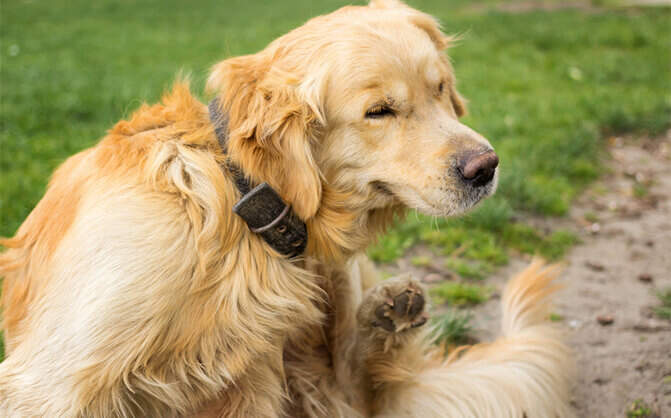
Credit: www.adamspetcare.com
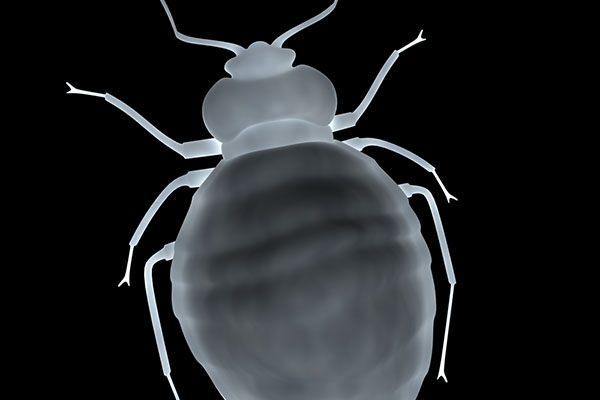
Credit: www.terminix.com
Frequently Asked Questions Of How Do You Know If Your Dog Has Bed Bugs
Can Bed Bug Live On Dogs?
Contrary to fleas and ticks, bed bugs do not usually infest dogs. Bed bugs feed and go back to their hiding spots instead of living on the furry body. However, dogs can carry bed bugs if they hide in their collars until they find a human host.
So, bed bugs cannot live on your dog’s fur, but dogs can carry them. You can comb off any bed bugs you find on your pet with a flea comb.
How Do I Get Rid Of Bed Bugs On My Dog?
If your dog has been bitten by bed bugs, you can use a flea comb to remove any visible bed bugs. In case of severe bites or reactions, your pet may require medical treatment. It is rare for bed bugs to live on dogs, but they can be carried by them in their collars or fur until they find a human host.
How Do Dogs Act When They Smell Bed Bugs?
Dogs don’t usually get infested with bed bugs but can carry them in their collars. Dogs act when they smell bed bugs by sniffing and detecting them. Bed bugs do not burrow in dogs’ skin or coat, but they can leave fecal spots & molted skin.
If excessive scratching or licking occurs, medical treatment may be required. To remove bed bugs from a pet’s fur, simply comb them off using a flea comb.
Do Bed Bugs Burrow In Dogs Skin?
No, bed bugs do not burrow in dogs’ skin. Bed bugs prefer hairless human skin, and instead feed on dogs & other animals only when they can’t find a human host. While dogs can carry bed bugs if they hide in their collars, these insects cannot live on their fur.
Bed bugs aren’t fans of burrowing and a hairy dog is like having a coat of armor to them.
Summing Up
To sum up, How Do You Know If Your Dog Has Bed Bugs, even though bed bugs are not commonly known to infest dogs, they can still hitch a ride on your furry friend and cause havoc. It is important to stay vigilant & regularly check your dog for any signs of bites or secondary signs of bed bug infestation, such as fecal spots or shed exoskeletons.
However, if you suspect your dog has bed bugs or has been bitten, seek medical attention and take the necessary steps to rid your home of bed bugs. Remember, prevention is always better than cure.

